What’s the big deal?
European rabbits (Oryctolagus cuniculus) compete with native species for food and habitat. They tunnel underground causing land degradation and erosion.
European RabbitInvasive species are the second greatest threat to biodiversity after habitat loss
They are a global problem, a Canadian problem, and a British Columbia problem. Understanding their negative impacts on our environment, economy, and health, is a good first step in taking action to stop their spread.
Quick Links
What’s the difference?
The Climate Change Connection
They threaten Indigenous ways of life
BC’s Most Unwanted
They decrease agricultural productivity
Damage to forests and coastal areas
They reduce water quality
They impede access to recreational areas
They can seriously damage infrastructure
They reduce property values
Other Costs
Nature Needs You
The Climate Change Connection
Climate change exacerbates just about every problem.
And invasive species are no exception.
In 2021, extreme climate events in BC introduced an urgent new reality. Wildfires and flooding help clear the way for invasive species to spread their seeds further and more aggressively than ever before. These extreme events also wipe out work done to remove invasive species and restore habitats to their natural states. Some invasive plants can even power up a wildfire, literally adding fuel to the fire due to their naturally flammable qualities.
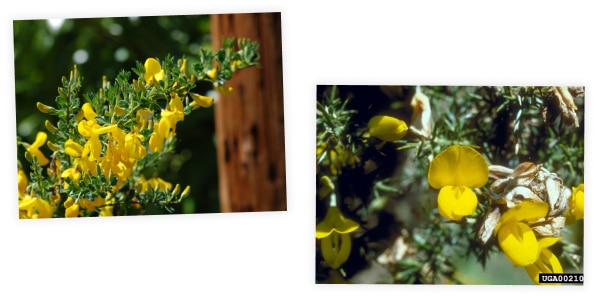
Scotch broom (Cytisus scoparius) and Gorse (Ulex europaeus) are two such species.
Both are common in BC, produce lots of seeds, spread rapidly, and thrive in disturbed areas. Their branches are very oily by nature, and they can help a wildfire rage.
The impact of English ivy (Hedera helix) also gets more concerning with climate change.
This evergreen climbing vine, common throughout the Lower Mainland and Vancouver Island, grows up native trees adding weight and stress to canopies, making trees more susceptible to storms and extreme winds. It means trees don’t live as long and their important work absorbing carbon dioxide, and turning it into oxygen is drastically reduced.
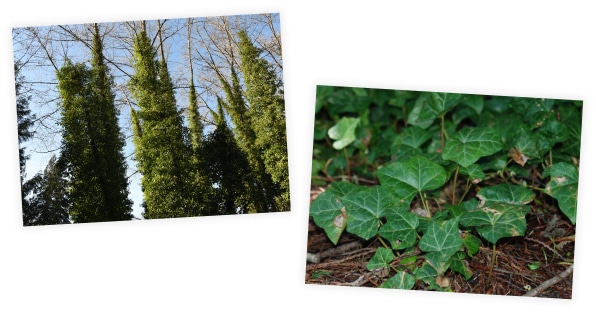
They threaten Indigenous ways of life
Indigenous people have a sacred relationship with the land. Indigenous practices, traditions and ways of life are threatened by many things, including invasive species.
BC’s MOST
Not all invasive species are equal. In fact, a small number of invasive species are responsible for a lot of the damage.
Eurasian watermilfoil
Myriophyllum spicatum
LEARN TO IDENTIFY
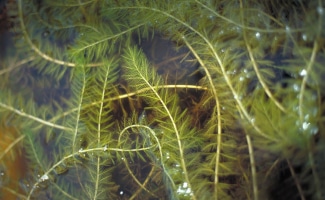
Scotch broom
Cytisus scoparius
LEARN TO IDENTIFY
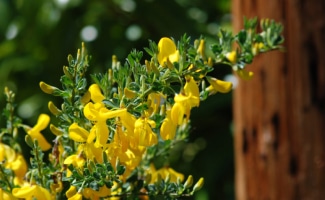
Cheatgrass
Bromus tectorum
LEARN TO IDENTIFY

Diffuse knapweed
Centaurea diffusa
LEARN TO IDENTIFY

Purple loosestrife
Lythrum salicaria
LEARN TO IDENTIFY

Orange hawkweed
Hieracium aurantiacum
LEARN TO IDENTIFY
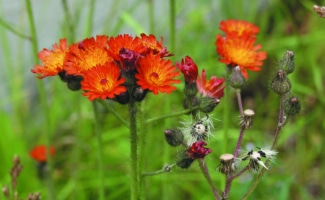
These six invasive species alone caused an estimated $65 MILLION in damage in 2008.
They decrease agricultural productivity
It’s estimated that the BC agriculture industry loses over $50 million each year in crop productivity caused by invasive species. Whether it’s knapweed infesting rangelands and reducing forage quality, or the many other species that out-compete desired species in cultivated fields, it all leads to reduced yields and higher food costs.
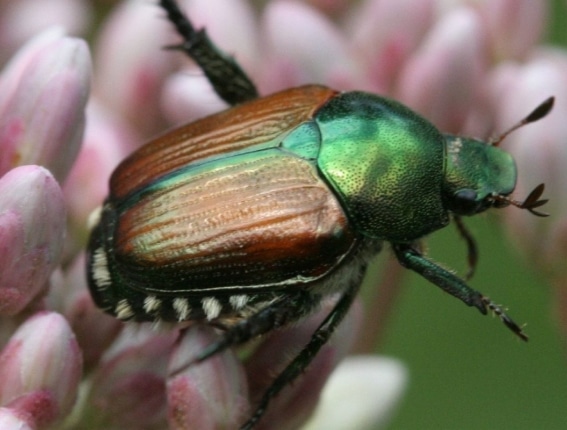
$14.5 million
The estimated cost of annual crop damage caused if Japanese beetle (Popillia japonica) establishes in BC.

$19 million
The estimated cost of annual crop damage caused by European starlings (Sturnus vulgaris) in BC.
They damage forests
Native plant species often take decades to grow, slowly creating intricate, deep, and healthy root systems in the forest floor. In contrast, invasive plants often grow rapidly with weak, shallow, or tap roots. When they out-compete native species, environments become more susceptible to erosion, landslides, and damaging sediment run-off.
They damage coastal areas
Marshlands, wetlands, and tidal zones are critical ecosystems. Just as human kidneys extract waste from our blood and balance bodily fluids, wetlands can clean the water that flows through them, mitigate large flood events and recharge underground aquifers. When invasive aquatic plants are introduced, they quickly crowd out native species that act as natural filters, and disrupt the delicate symbiotic system.
They reduce water quality
Forest erosion from invasive species impacts water health, quality, and turbidity. They impact ocean temperatures and cause flooding. Bacteria and diseased run-off can cause harm to people swimming in infected waters, to our drinking water, and to the aquatic species that live in the waters we use for fishing.
They impede access to recreational areas
Many invasive plants grow so quickly they can block access to trails, beaches, and streams. Getting rid of them is tricky, and often costly, because they can’t simply be removed and transferred to another jurisdiction or location.
They can seriously damage infrastructure
Infrastructure damaged by invasive species costs municipalities and provinces millions in repairs and lost productivity each year.
They reduce property values
Invasive species devalue both public and private property by:
1
Rendering the
property unusable
2
Causing damage
to properties
3
Increasing maintenance
and operation costs
In BC all four Knotweed varieties – Giant, Japanese, Himalayan, and Bohemian – are a major source of property damage.
These noxious weeds grow up to 10cm per day, spread quickly, and are very difficult to control. Their roots and rhizomes grow through weak points in masonry, wood, concrete, and pavement causing damage to building structures and foundations, retaining walls and fences, driveways and parking lots. They also block and lift drainage pipes, clogging sumps and drainage pits, and destroy underground cabling.
They increase control and management costs
Every year, invasive species cost farmers and ranchers in BC an estimated $50 million in crop revenue. And in order to combat the problem, they must spend extra time and money on expensive control measures.
They can restrict
cross-border trade
When invasive species taint crops or livestock, the countries we export to can impose restrictions that lower the price we get for those goods. Our trade partners can even stop accepting our exports entirely.
Nature Needs You
Now that you’ve seen some of the ways invasive species impact our environment, economy, and health, it’s time to take action.
Identify
Learn to identify invasive species.
REPORT
Report invasive species you
have identified.
Play your part
Stop the spread of invasive species with these simple best practices.
DONATE
Support our essential work with a tax deductible donation.

